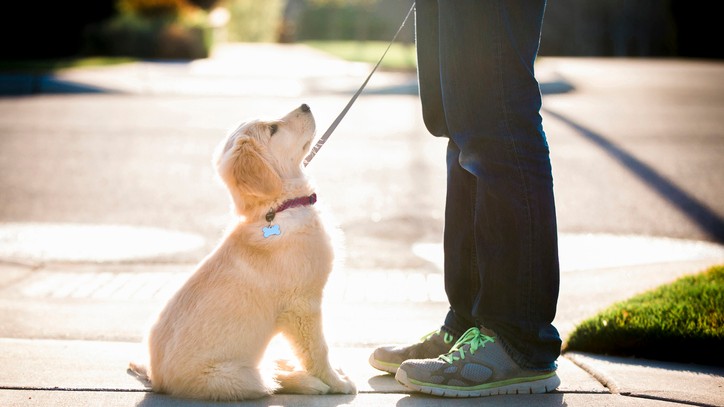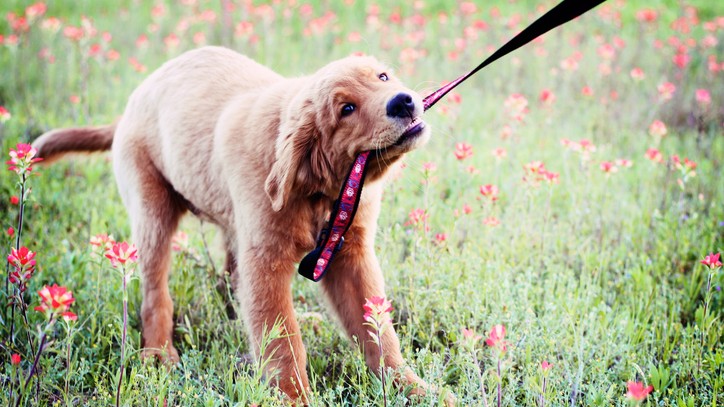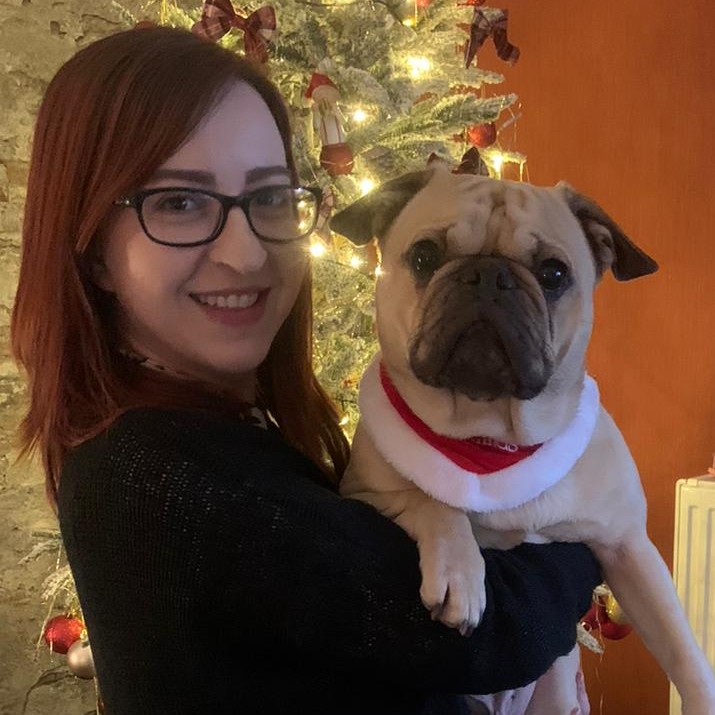How to train a puppy to walk on a leash
Learning how to train a puppy to walk on a leash is easy… with a little help!

Young pups are notorious for being full of energy and not quite capable of listening to their owners all that much, so learning how to train a puppy to walk on a leash can be quite the challenge.
That’s why patience and persistence are key in the success of this lifelong skill.
If your wonderful new addition to the family prefers to take you for a walk by tugging on their leash or, on the opposite end of the scale, refuses to walk to the point that you are having to gently pull them along, then you’re having to physical restrain and control them as opposed to enjoying a lovely walk together.
This type of behavior can be draining for both you and your four-legged friend, especially if they are a large breed that may become more overwhelming once they reach adulthood.
With that said, you’ll be relieved to know that our helpful tips and tricks will have you walking calmly side by side in no time.
- Best puppy food: Wet and dry options for your young pup
- Puppy food aggression: Five tips to stop it
- How to play with a puppy: Tips and advice from a vet
Why is leash training important?
Having your dog feel comfortable on a leash has multiple benefits. Not only does it allow for a more enjoyable walk all round but being on the leash can be a great way of keeping them safe, especially when walking near a busy road or perhaps close to a deep body of water.
Once your pup is trained to walk on their leash, it will provide them with the opportunity to get lots of exercise within a safe environment – especially on a long or extendable leash – helping them to remain fit and healthy by exploring the world around them.
Get the best advice, tips and top tech for your beloved Pets
Leash training can also improve a canine’s responsiveness, playing a crucial role in recall and acknowledging simple commands, such as to ‘stay’ and ‘sit’. This also helps provide your puppy with mental stimulation by exposing them to new scenarios and environments.
What do I need to start leash training?
Firstly, of course, you’ll need a leash. It’s best to look for one that is of a suitable length, which will allow you both to walk comfortably beside one another. The leash needs to be long enough to provide your pooch with enough slack but short enough so that they remain safe and close by.
You’ll then need a collar or harness to attach the leash to. Be sure to buy one that fits your puppy just right – not too tight and not too loose. To make sure it’s a perfect fit, the general rule is that you should be able to fit two fingers in between your pooch’s neck and the collar.
Lastly, you’ll need a handful of their favorite treats to be used as a reward for showing good behavior whilst on the leash.

How do I train my puppy to walk on a leash?
When it comes to introducing your puppy to anything new, it’s important that you do it gradually and in small doses. And leash training is no different.
- Allow your pup to get used to wearing a collar or harness: start off by popping it on them for short periods of time whilst in the house. Create a positive association with their new accessory by playing and giving them treats as soon as it goes on so that they’ll be excited to wear it in the future. Here's how to put a harness on a puppy.
- Introducing the leash: once your canine has gotten used to their collar or harness, it’s time to attach the leash. Keeping it slack, follow your pup around the house or garden for a few minutes to allow them to feel comfortable with being connected to you.
- Make the leash fun: it’s important that your dog associates the leash with fun, so use the best puppy toys or puppy treats to encourage play whilst the lead is on to start building that happy and positive connection.
- Heading outside: when there are no signs of stress or agitation at wearing these items, it’s time to put their newly learnt skills to the test and head to a quiet area away from the familiarity of the home and garden. It’s normal for your pup to feel overwhelmed or over-stimulated at first since this is an entirely new experience for them. However, this will pass over time. Just don’t forget the treats for good behaviour and to keep the walks short to begin with.
- Be patient: walking on a lead is brand new to your pup so it’s important to understand that they won’t get it straight away. That means using calm and gentle movements, combined with encouraging words and actions.
What age should you start leash training a puppy?
When it comes to learning how to train a puppy to walk on a leash, the question of at what point you should do so is particularly pertinent. It's important to start at a young age in order to get them into good habits early, but not so young that they’ll be too infantile to take in anything you say. Anywhere between four to six weeks is the ideal age at which to start learning how to train a puppy to walk on a leash.
It’s not impossible to start doing it once they get a little bit older, but it does become more difficult – that phrase about teaching an old dog new tricks immediately springs to mind. Therefore, it’s very likely that you will be able to start leash training your puppy almost as soon as you bring them home.
Why you should never drag your puppy on a walk
There are a number of reasons why you shouldn’t pull your puppy when they’re on a leash, not least being the fact that you could easily end up hurting them.
Not only could you strain their neck; you could end up dislocating joints or other parts of them. They’re still young and growing, and while they may be boisterous, they’re still a bit fragile.
Also, being dragged along isn’t much fun for your dog. Continuous yanking can lead to the development of negative associations. Instead, examine the reasons why they may be stalling. Maybe they’ve seen something interesting, or the surface is too rough, hot, or cold for them. While you don’t want to let them dictate where they go, pulling them along in an overly forceful manner isn’t the right way to go about things.
You might be questioning how far can a puppy walk.
Chloe is a freelance writer, editor, and proofreader, who has more than ten years’ experience in creating animal-focussed content. From National Geographic to Animal Planet, Chloe’s passion for creating fact-filled features all about wildlife and the environment is evident. But it’s not just wild animals that Chloe’s fascinated by. Having written more than 75 articles for PetsRadar - and having her very own four-legged friend by her side - it’s no wonder that her love of dogs (and, of course, cats) has grown exponentially.
Her website, www.chloemaywrites.com, and social media pages - @ChloeMayWrites on Instagram, Facebook, and Twitter - showcase her knowledge through daily facts and trivia tidbits. For example, did you know that snails have teeth?!

